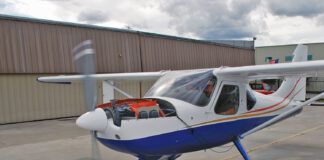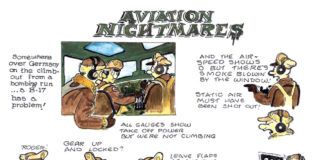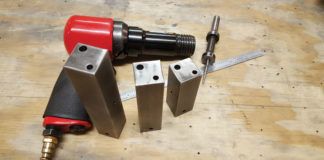
Duck, Its a Canard
As a Velocity builder, I sat down to enjoy Augusts canard article: Rutans Take. All was going well until the mention of the Piaggio Avanti. Holy smokes and stop the press! This plane, though beautiful, fast and efficient, is not a canard! The Piaggio is actually a bi-asymmetrical winged, T-tailed, pusher-type turboprop.
More simply put, it is a T-tailed biplane. In order to be called a canard design, an aircraft must have at least one control surface (its elevator) located in the canard or front wing. The Piaggio has a conventional T-tail elevator location. Other than the unconventional double-wing design, with flaps on both wings, the Avanti is actually quite similar to other more traditional designs. What is not conventional is its combination of amazing speed, large cabin size and good fuel efficiency.
Bill Walker
Kits and Bits
I could be mistaken, but after four years of growing fascination with Burt Rutans work, I think I saw a couple errors in the article. That I know of, RAF never kitted anything but instead only sold plans. Others like Ken Brock, Featherlite, Hal Hunt, etc. became involved in making subsystems and parts in the old days. And the Predator Burt designed was an agplane-not the Predator we think of first when hearing that name these days. That is unless he did some secret work for General Atomics or was the Govt. Contractor that bought out Abraham Karem and his company, Leading Systems.
On another note: The new web site is looking great! And the magazine is always a joy to see in the mailbox. Keep up the good work.
Dave Viglierchio
A Hummel Apology
Having thoroughly enjoyed the September 2009 issue of KITPLANES, I felt I must send you guys a short note of apology. These last few years, I have sensed a leaning on the part of the magazine toward the truly high-end examples of homebuilt aircraft. The advent of LSA has also prompted a review of many planes that, while lovely examples, are clearly well beyond the scope or reach of the average working person. Your review of the Hummel H-5 proved to me that you still speak for those of us who set out on our skyward journey with a set of plans and a handed-down pair of tinsnips! Those also commit aviation who buy their plane one sheet of 6061 at a time. Good on you for covering all spectrums of this wonderful industry.
Darryl Klassen
I just received the September issue today and enjoyed reading Whats Hummin at Hummel? There was one discrepancy regarding the Harry Riblet GA-30-618 airfoil section that I would like to call to your attention. The maximum thickness occurs at 30% chord rather than the 18% shown in the article. Harrys airfoil descriptions are quite easy to read and understand. GA refers to general aviation, the first two numbers the percent chord where the airfoil is thickest, the third number is the camber, the last two the thickness ratio to chord. For the H-5, that results in a turbulent flow, high cambered thick airfoil with the thickest point at 30% chord and very high trim drag. As an aside, I would like to see an H-6 with a 30-415 airfoil that would require only 1.5 negative incidence on the horizontal airfoil, giving much less trim drag. Low-end numbers would probably stay within 1% to 2% of current ones and top end would increase 10% to 15%. Having flaps makes that possible. Now thats a Hot Rod.
Roy Rogers
Taking a Flyer
I agree with Mack [Kreizenbeck, Letters, October 09]: We should give credit to the correct person for the Kitfox design. I was the engineer for Denny Aircraft for many years, signing on with the company after the introduction of the Model 2, and continuing on with SkyStar for several years.
I know almost nothing of the Avid Flyer, and never looked at them for design inspiration. In fact, I can state the opposite is true. It was not uncommon to see features that I designed into the Kitfox models showing up on an Avid Flyer a short time after release. The most blatant example of this is the muffler I designed for the Rotax 912 engine-it was sold by an ex-Denny Aircraft employee to Avid. This muffler was sent to the Rotax facility in Canada for testing. The response: It worked better than the stock muffler. At the next Oshkosh, the Rotax 912 was displayed with a muffler that looked identical.
The first major change I made to the Kitfox was the control system to remove the adverse yaw. Thanks for noticing, Amy. I have no idea what Avid does. The Vixen was a completely new design, retaining the flaperon concept and tube-and-fabric construction, and has almost nothing else in common with the original Kitfox, let alone any Avid Flyer. Subsequent models including the one now sold by Kitfox Aircraft are variations of the Vixen.
To give Dean Wilson credit for the Kitfox Line of aircraft is wrong. Amy, you owe no apology to anyone for your article. Oh, you did make one tiny error: The Kitfox has a aluminum spring gear, not steel. Thanks for a nice article.
Daniel MacPherson
Nice to see the Avid/Kitfox discussion/rivalry continue.-Ed.




